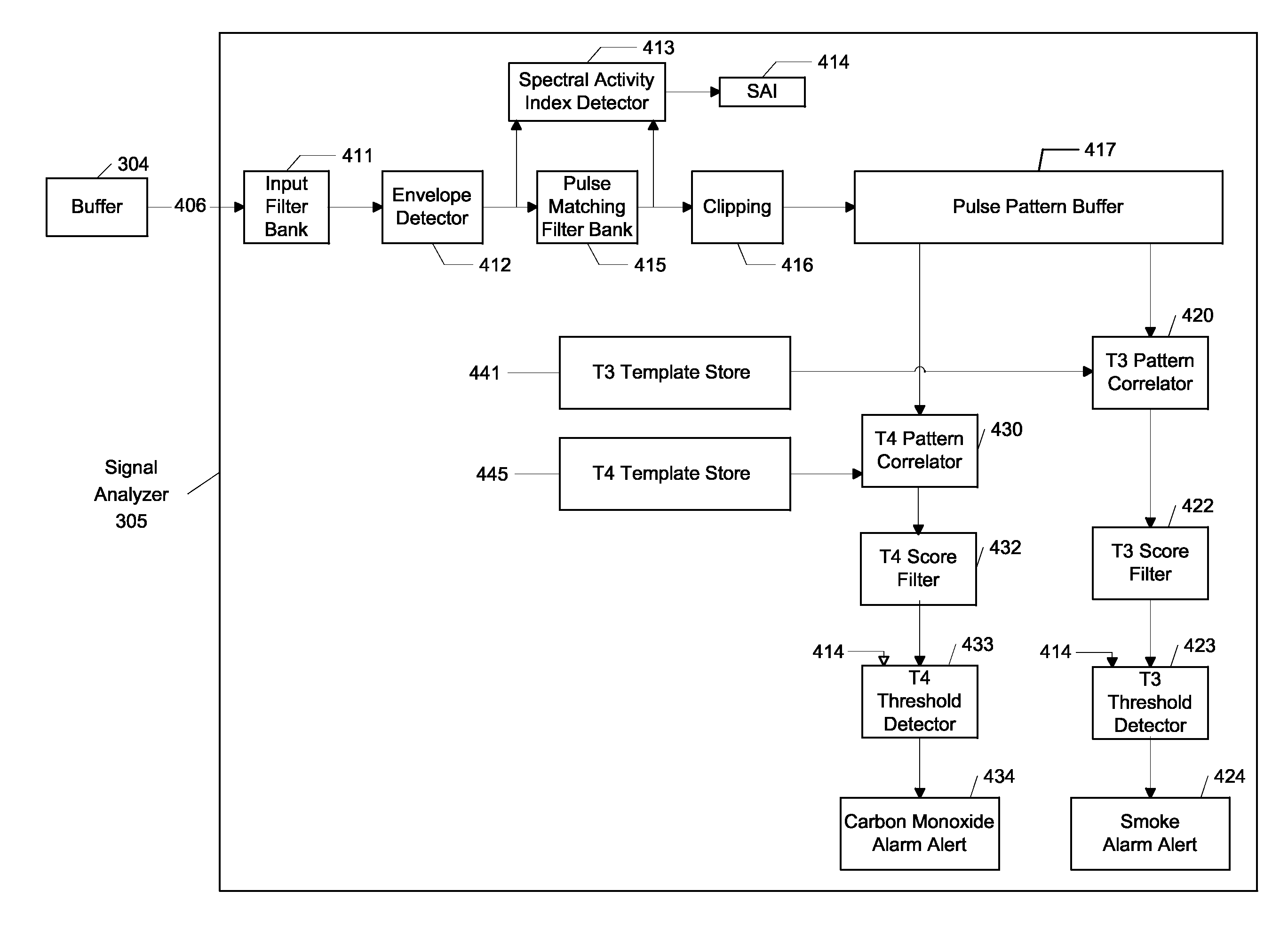Signal processing system and methods for reliably detecting audible alarms
a technology of signal processing and audible alarm, applied in the direction of electric signalling details, fire alarms, instruments, etc., can solve the problems of insufficient traditional means of alerting, inconvenient to deadly, and less than effective means of alerting people with hearing loss
- Summary
- Abstract
- Description
- Claims
- Application Information
AI Technical Summary
Benefits of technology
Problems solved by technology
Method used
Image
Examples
Embodiment Construction
[0026]The present invention comprises signal processing methods and associated circuitry for reliably detecting audible alert / alarm signals such as those generated by commercially available smoke, fire, and carbon monoxide detectors. For purposes of illustrating a preferred embodiment of the invention, the circuitry and signal processing methods are described in the context of a system that, upon detecting an audible alert signal, generates a supplemental alert signal capable of alerting individuals who might not otherwise respond to the alarm condition, such as children, persons who are asleep, hearing impaired persons, or intoxicated persons. As will be apparent, the disclosed signal processing circuitry and methods can also be used for other applications, such as the monitoring of alarm conditions by police, fire, emergency and security personnel.
[0027]In some embodiments, the system can be adapted to be positioned at the bedside (and can also serve as an alarm clock) or to be mo...
PUM
 Login to View More
Login to View More Abstract
Description
Claims
Application Information
 Login to View More
Login to View More - R&D
- Intellectual Property
- Life Sciences
- Materials
- Tech Scout
- Unparalleled Data Quality
- Higher Quality Content
- 60% Fewer Hallucinations
Browse by: Latest US Patents, China's latest patents, Technical Efficacy Thesaurus, Application Domain, Technology Topic, Popular Technical Reports.
© 2025 PatSnap. All rights reserved.Legal|Privacy policy|Modern Slavery Act Transparency Statement|Sitemap|About US| Contact US: help@patsnap.com



